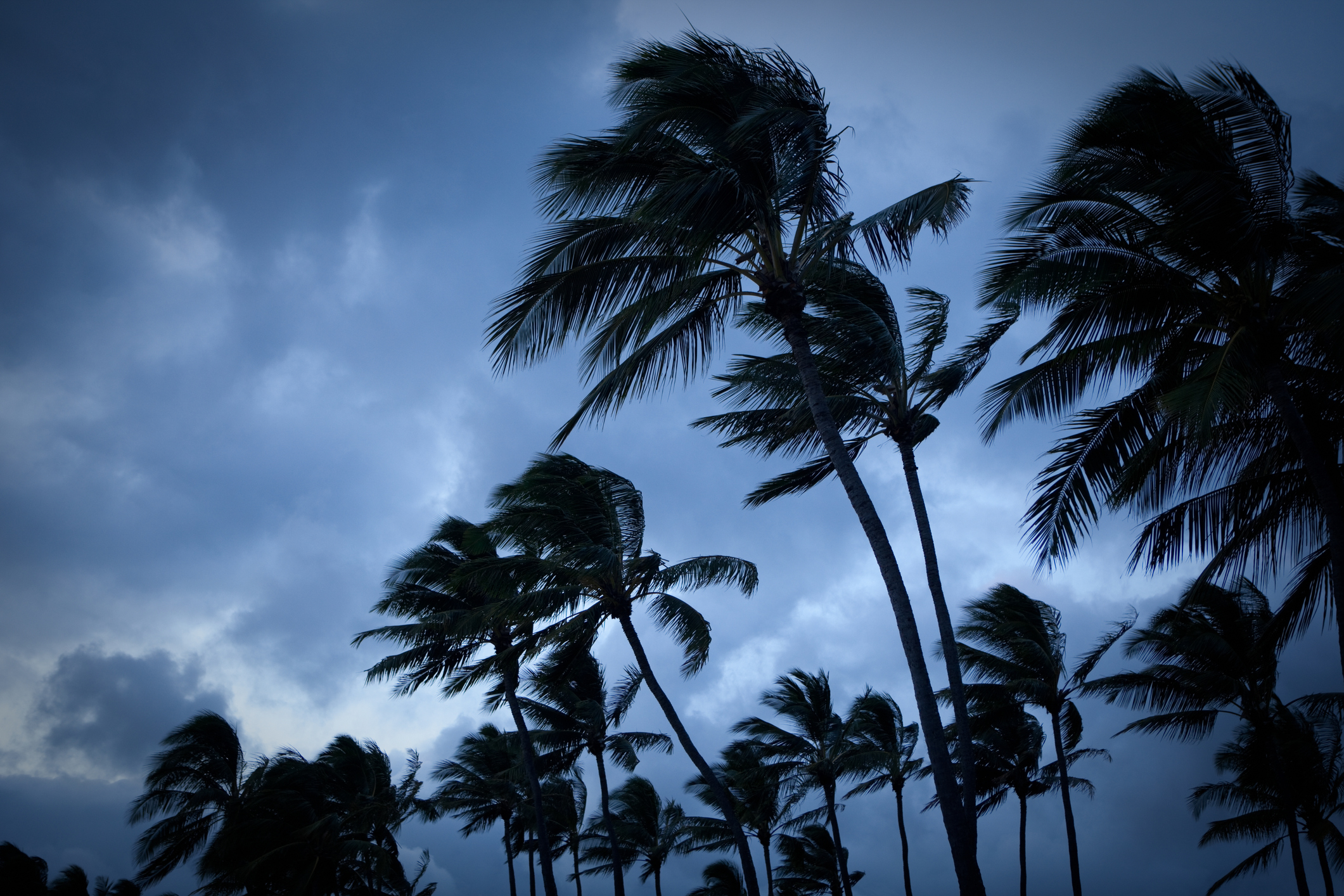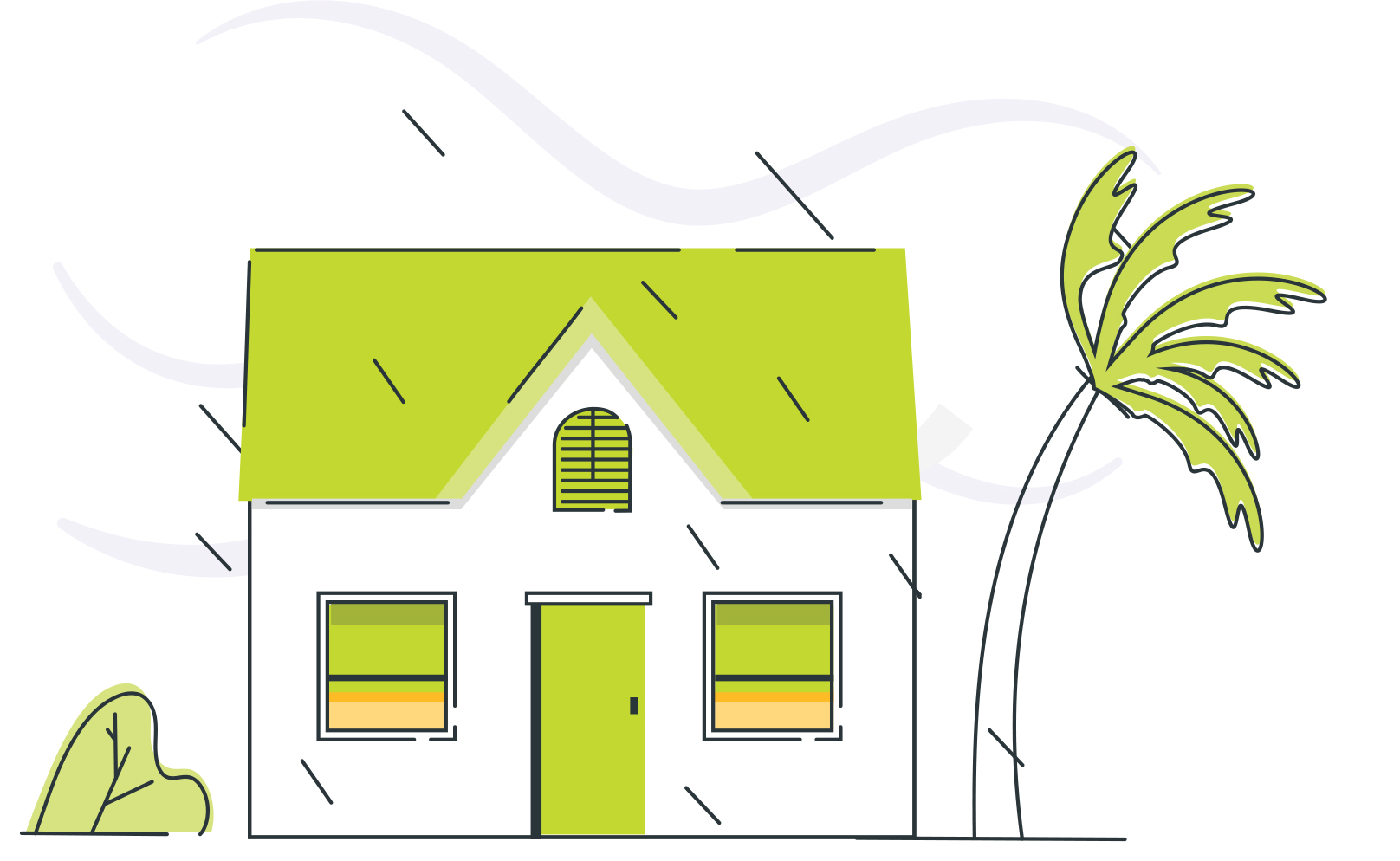Hurricane Safety Tips: How to Protect Yourself from a Hurricane

With a short amount of time to prepare before a hurricane hits, we've created a guide to help you create an action plan to protect yourself and your loved ones from a hurricane, before it reaches your home. Below, you’ll find useful tips for every stage of the storm’s movement, so that you’re able to protect yourself both before and during a major hurricane.
Recent Hurricane Season History in the United States
In 2018 there were 14 tropical storms (eight of which became hurricanes) in the United States alone. A tropical storm features winds between 39 and 73 miles per hour, and becomes a hurricane when maximum sustained winds reach the range of 74 mph and 95 mph. Of the eight hurricanes, two were considered major: Hurricane Michael and Hurricane Florence. Combined, they were responsible for dozens of deaths and a vast amount of destruction across the U.S. Families across several states were displaced due to power outages, extensive building damage, ongoing flooding, and more.
The hazards of hurricanes are numerous and dangerous. Usually, residents have just a few days’ warning before the storm hits, bringing with it heavy rain, flooding, high winds, storm surges (when the storm pushes sea water inland), and possibly even tornadoes.

Precautions to Take Before Hurricane Season Begins
Making protective home upgrades is key to preventing or reducing damage from happening to your property, and protecting your family. There are a number of natural disaster preparation projects ideal for homes that experience occasional to frequent storms. Some of these helpful storm protection upgrades include installing impact-resistant doors, hurricane shutters, roof braces, and water barriers (where flooding is a concern).
If you’re unsure what is covered by your homeowners insurance, look into this article before hurricane season comes around.
As it turns out, many standard homeowners insurance policies don’t cover flooding, though many policies do cover wind damage. But keep in mind, there are often special deductibles that must be paid first when insurance policies do cover the damage done by hurricanes. It pays to know what your insurance covers before a storm hits, and upgrade your coverage if necessary.
What to do When a Hurricane Warning is Issued
A hurricane watch means that conditions are right—with sustained winds of at least 74 mph—for a potential hurricane to brew in a specific region. A hurricane watch is no guarantee that the storm will manifest, but it is a very good indicator that one will happen in the near future.
A hurricane warning is issued 48 hours before a storm is expected to hit a particular region. What’s the difference? A hurricane watch is meant to keep people alert, while a hurricane warning means that the hurricane is expected and will most likely occur in one or two days.
If you receive a hurricane watch in your area, there are two things you should do immediately:
Tune into your local weather channel or news station for continuing updates (there are also some great weather apps out there, such as The Weather Channel App), and review your evacuation plan in case the watch becomes a warning.
How to Prepare Before a Hurricane Arrives
If you’ve received a hurricane warning, there are several things you should do when a hurricane is 24–36 hours away from reaching your hometown.
We recommend preparing in the following ways, with many of these suggestions originating from Ready.gov and FEMA:
Assemble a preparedness kit that includes: non-perishable food and water for at least three days (or longer, based on the anticipated damage of the impending storm), medications, a flashlight, batteries, cash, a first aid kit, and sleeping bags or blankets. Also helpful to have during a storm are battery-operated lights and lanterns, as well as solar-powered phone chargers or power banks for mobile devices.
The CDC also recommends putting together a package with personal care and hygiene-related products—hand sanitizer, soap, shampoo/conditioner, dry shampoo, toothbrushes and toothpaste, diapers, feminine care products, bandages, antiseptic, pain medicine, etc.
Have a communication plan in place if you lose power, or if the phone lines go down (or are overwhelmed with heavy emergency call traffic). Texting is usually fast and reliable, if cell towers haven’t been affected. But Facebook’s Safety Check can help you reach more people at once.
Know your evacuation plan, with a route from your home to the shelter location nearest you, if you must leave home quickly.
Make sure your gas tank is full and you have emergency supplies in the car, including a change of clothes. Park your vehicle in a garage, if possible. If you do not have access to a garage, park close to a building and away from trees or power lines.
Shield your home’s windows with permanent storm shutters. If hurricane shutters are not available, board windows with marine or exterior-rated plywood.
Safeguard your home and property by securing fuel tanks and outdoor furniture, using sewer backflow valves, and taking inventory of belongings in case of damage. If safe to do so, take photos to help with documentation of items for potential insurance claims.
Find and secure essential documents including personal identification like social security cards, birth certificates, and legal documents, as well as health records and your (The CDC recommends that if possible, laminate your emergency contact list. Also keep this list stored in your phone and in your email inbox).
If evacuating, store these in a waterproof container that can be kept on your person. If remaining at home, keep them in a waterproof appliance like the dishwasher, or stored higher up on the second floor.
Keep receipts of money spent preparing for the hurricane, so they may be shared with your insurance company. This includes money you spend on equipment like sandbags, water pumps, plywood for boarding windows, etc.
Know what warning sirens sound like in your area, and what you need to do should they go off.
Fill large containers with potable water, including your bathtub (in case running water isn’t available for a few days).
Have a fire extinguisher nearby. Make sure everyone in the house knows where it is, and how to use it safely.
Protecting Yourself During a Hurricane
Once a hurricane arrives, you’ll have to rely on your planning and preparation beforehand to help you endure the storm.
There are a few key things to keep in mind that will help keep you and your family safe during the storm. These tips are especially important to keep in mind if you are riding a storm out solo (because there isn’t someone else to remind you or help out with these things).
- Stay away from low-lying areas where flooding can occur, and get indoors immediately. Do not go outside unless necessary, as high winds can kick up dangerous flying debris.
- Do not stay in rooms where windows aren’t covered, and keep your curtains and blinds closed. By now, you should have already closed your storm shutters or boarded-up your windows. If possible, take shelter in a room without windows while the storm passes.
- Turn off electricity if you are instructed to do so and turn your refrigerator thermostat all the way down in case you lose power. If you have to evacuate, FEMA recommends shutting off water and power.
- Have a way to move up, either to a second floor or an attic. Flooding can happen quickly, so be sure you know where you’re going, and how to get there, if it does start to flood.
- (This one may sound a little extreme, but take our word for it). Take a hatchet or axe with you if you have to move up to a second floor or attic, as you may need to carve out an escape route.
- Keep your phone, and a television or radio with you and always powered on. This will allow you to monitor weather reports and stay abreast of changing conditions and emergency alerts in your area.
- Above all else, stay calm. In an emergency, it’s easy to become overwhelmed. When you are stressed out your brain doesn’t work as well as it should. Breathe deeply and make strategic decisions. As difficult as it seems, staying calm and even-tempered so you can think clearly is incredibly helpful during stressful situations like a passing storm.
Advice for After the Hurricane Passes
If you had to evacuate because of the storm, make sure you return home only after authorities confirm that it is safe to do so. Travelers Insurance also recommends these three tips:
- Exercise extreme caution if returning to a flooded basement or standing water. If the power to your home was not turned off, electrical equipment or live wires can pose a fatal risk, turning the floodwater into an electric current. Make a list of all damaged items for your insurance company. You should include name of item, brand name, description of item, and date of purchase. Taking photos of the damaged items is also a good idea.
- Be cautious of hazards. These may include downed power lines, stray tree limbs, damaged gas lines, and sharp or broken objects strewn across the ground.
- Board up any broken windows, as this will deter future water damage and potential looters if the rain is still coming down. Also, make any easy repairs that will help keep your home secure in the short-term.
Ready to Prepare Your Home for a Hurricane?
It’s hard to protect against these natural forces of deadly destruction. However, you can circumvent certain avoidable issues through prudent planning. And don’t forget, a lot of this planning and preparation can occur during the dry season, when you have time to thoughtfully think things through before the time to act comes.
If you live in an area that is prone to hurricanes, consider making some precautionary upgrades like storm windows, roof latches, and impact-resistant doors. Ygrene can help with the financing of these projects, as we’ve improved and simplified the process. Click below to get pre-approved within less than 30 minutes, and see how much financing you qualify for to help you complete your hurricane and storm resistance efforts.
Get Approved for Storm Resistance Financing Now
Once you get qualified, simply choose what types of projects you want to do, and find a local contractor to get started. It’s that simple.




